7 tidbits you want to taste in Lisbon
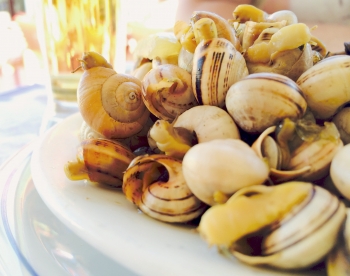
Is there a life after work? Indeed! To the British is going to a pub and drink some beer, Spanish love tapas and cañas, and in Lisbon we can’t resist some good old tidbits. Like peixinhos da horta, octopus with lots of olive oil or the traditional dish of snails!
When the weather begins to warm any cafe or tascas serves Portuguese tidbits with an ice-cold beer. But there are many other tidbits to taste:
Snails
After thoroughly washed, the snails are cooked with olive oil, onion and garlic, accompanied with an ingredient that gives a special touch to this tidbit: generous doses of oregano!
Peixinhos da horta (Little fish of the garden)
Despite the name, this tidbit is made with chunks of cooked green bean wrapped in polme, which is then fried in hot oil. No one knows the origin of the name, but it is believed to be related to its similarity with small fried fish. This is the origin of Japanese tempura dish.

Meia-desfeita (Half-undone)
This is a typical Mouraria tidbit, which inspired portuguese writers such as Eça de Queiroz and Ramalho Ortigão. Known once as the food of the poors, includes pieces of cod with chickpeas, boiled eggs broken into pieces and chopped parsley. The name is due to the fact that customers ask for a half portion of the dish.
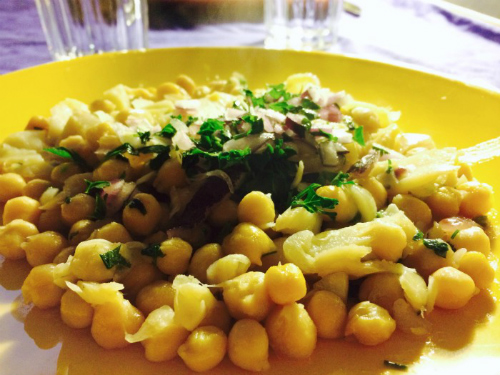
Octopus Salad
This is a light salad very much appreciated in Portuguese cuisine. The octopus, the main ingredient, is cooked and diced. It is served in small dishes and accompanied by onion, garlic, coriander and olive oil.

Salada de orelha (Ear salad)
As the name says this is a salad made with the ears of the porc, to which is added onions, garlic, parsley, olive oil and vinegar.
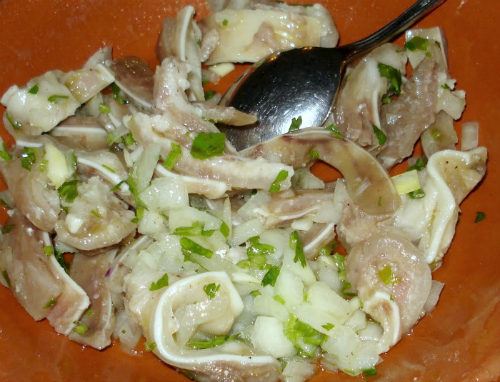
Baked snails
Snails generously sized, baked and served with mustard sauce. Only for connoisseurs.
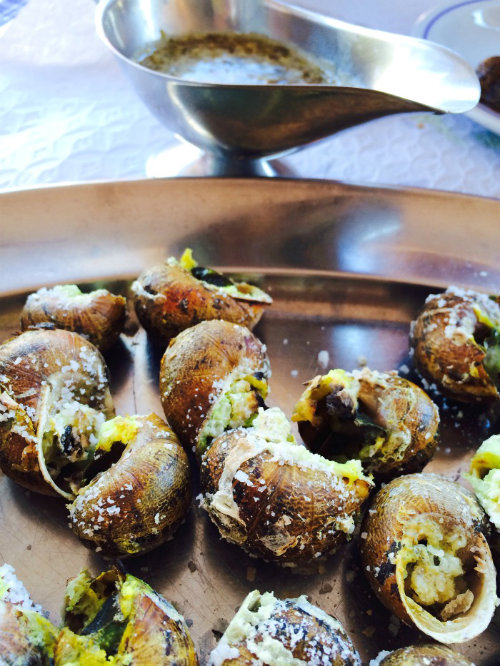
Ameijoas à Bulhão-pato (Clams à Bulhão-pato)
After being soaked two to three hours to release the sand, the clams goes into a pan with olive oil and garlic. Season with coriander, lemon juice and white wine. The dish is named after Raimundo António de Bulhão Pato (1828-1912), Portuguese writer, politician and poet who is best known for recipes he inspired like clams, hare or grouper. This is one of the fastest and easiest to cook, follow this recipe.
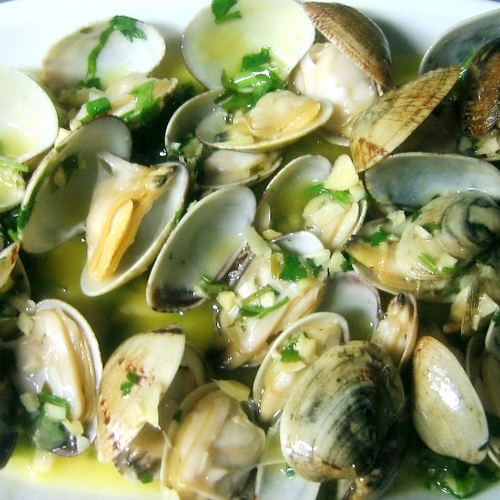
We’ll love to see your photo shoots, to know about your insights, suggestions and wishes on your food & culture experiences. Please share with us via Facebook, Instagram or Twitter and tag us @tasteoflisboa or #tasteoflisboa.
Feed your curiosity on Portuguese food culture:
How to identify an authentic Portuguese Tasca
Bacalhau à Brás – Portuguese Codfish Recipe
10 typical drinks from Portugal
Real people, real food. Come with us to where the locals go.
Signup for Taste of Lisboa’s next food & cultural experiences
Follow us for more at Instagram, Twitter e Youtube
